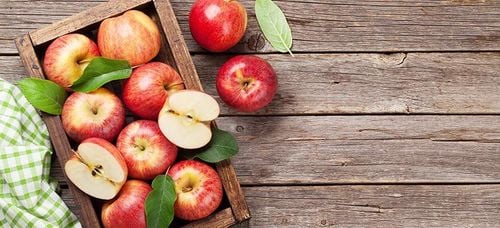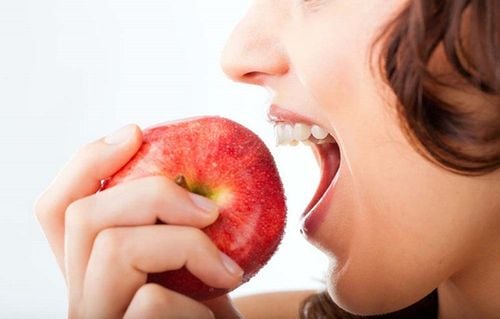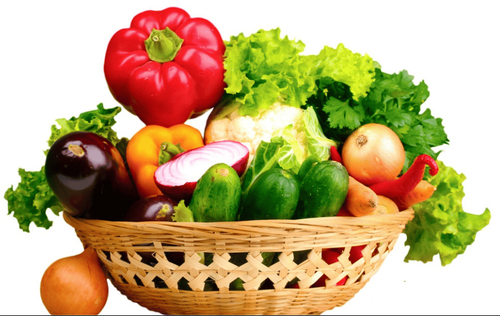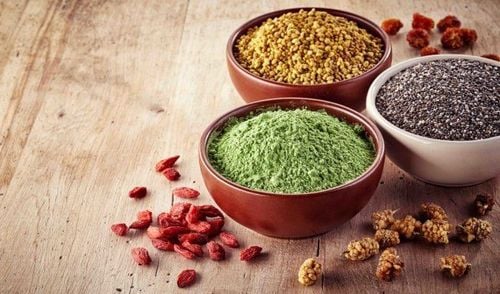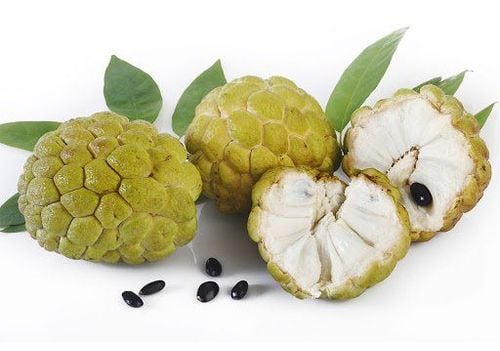This is an automatically translated article.
Fiber along with adequate water intake will help keep your digestive system healthy. A high-fiber diet may also help reduce the risk of overweight, obesity, metabolic heart disease, and diabetes. Keep reading for 22 more high-fiber foods you should be eating.1. The importance of fiber to the body
Fiber is extremely important for our digestive system. Fiber helps promote the digestion of food, as well as providing beneficial bacteria in the gut, which, in turn, can provide a variety of health benefits. Certain types of fiber can also promote weight loss , lower blood sugar levels and fight constipation .The Academy of Nutrition and Dietetics recommends about 14 grams of fiber for every 1,000 calories we consume daily. That equates to about 24 grams of fiber for women and 38 grams for men.
It is estimated that about 95% of American adults and children do not meet the recommended daily fiber intake. In the US, the average daily fiber intake is estimated to be just 16.2 grams for both sexes. Fortunately, increasing fiber intake is relatively easy - just integrate fiber-rich foods into one's diet.
Fiber is a general term that applies to any type of carbohydrate that our body cannot digest. The fact is that the body does not use fiber to fuel the digestive process. Fiber can provide the following benefits when we consume it:
Lowers cholesterol. The presence of fiber in the digestive tract can help reduce the body's absorption of cholesterol. This is especially true if you take a statin, a medication to lower cholesterol, and use fiber supplements like psyllium. Maintain a healthy weight. High-fiber foods like fruits and vegetables tend to be lower in calories. In addition, the presence of fiber can slow down digestion in the stomach to help us feel full for longer. Reduce symptoms of constipation. People who are struggling with constipation or the digestive tract in general may need to add more fiber to their diet. Natural fiber adds bulk to the digestive tract, as your body cannot digest fiber. This stimulates bowel movements. Promotes blood sugar control. It may take longer for the body to break down high-fiber foods. This helps you maintain a more stable blood sugar level, which is especially helpful for people with diabetes. Reduces the risk of gastrointestinal cancer. Eating adequate amounts of fiber may have a protective effect against certain types of cancer, including colon cancer. The reason for this is that certain types of fiber, such as the pectin in apples, can have antioxidant-like properties. Fiber has many health benefits, but it's important to combine fiber-containing foods with other substances to avoid side effects, such as bloating and indigestion. Drinking plenty of water while taking a fiber supplement can also help limit these symptoms.
2. 22 foods rich in fiber
2.1. Pears (3.1 grams / 100 grams) Pears are a popular fruit that are both delicious and nutritious. This is one of the best fruit sources of fiber. Fiber content in pears: 5.5 grams in a medium raw pear or 3.1 grams per 100 grams.2.2. Strawberries (2 grams / 100 grams) Strawberries are a healthy option and can be eaten fresh without processing. Interestingly, they are also among the most nutrient-dense fruits we can eat. Strawberries are packed with vitamin C, manganese and many other powerful antioxidants.
Fiber content: 3 grams in 1 plate of fresh strawberries, or 2 grams per 100 grams.
2.3. Avocado (6.7 grams / 100 grams) Avocado is a unique fruit. Instead of being packed with unhealthy carbs, it's packed with healthy fats. Avocados are rich in vitamin C, potassium, magnesium, vitamin E and various B vitamins. They also have many health benefits. In addition, avocado is also very easy to prepare and add to various dishes and recipes.
Fiber content: 10 grams in 1 cup of fresh avocado or 6.7 grams per 100 grams.
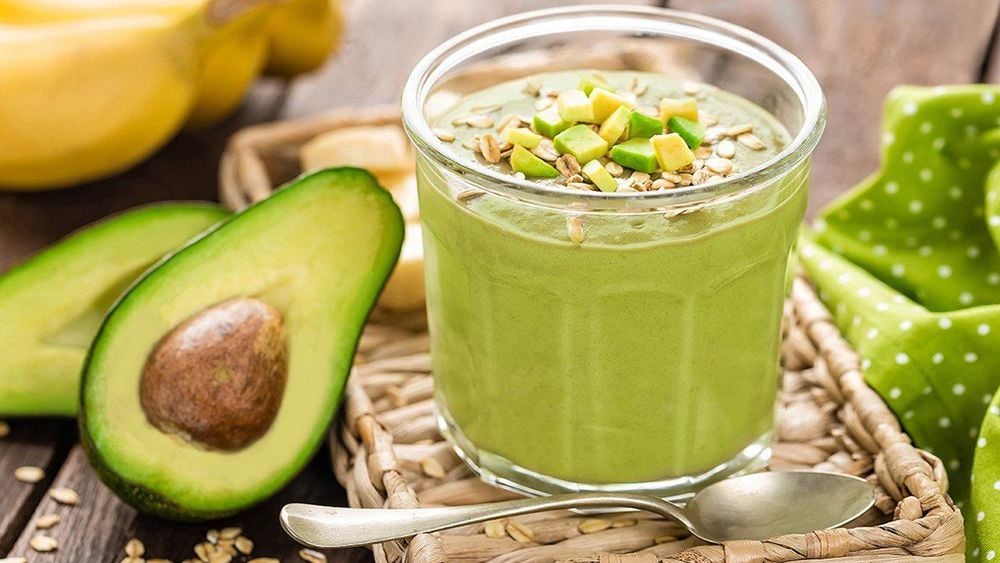
Bơ là loại quả chứa nhiều chất xơ và giàu dinh dưỡng
Fiber content: 4.4 grams in a medium-sized, fresh apple or 2.4 grams per 100 grams.
2.5. Raspberries (6.5 grams / 100 grams) Raspberries have high nutritional value with a very rich flavor. They are rich in vitamin C and manganese.
Fiber content: One plate of raw raspberries contains 8 grams of fiber or 6.5 grams per 100 grams.
2.6. Banana (2.6 grams / 100 grams) Banana is a fruit that provides many beneficial nutrients, including vitamin C, vitamin B6 and potassium. Unripe or green bananas also contain significant amounts of resistant starch, an indigestible carbohydrate that functions much like fiber.
Fiber content: 3.1 grams in a medium-sized banana or 2.6 grams per 100 grams.
2.7. Carrots (2.8 grams / 100 grams) Carrots are a delicious, crunchy and very nutritious root vegetable. It is high in vitamin K, vitamin B6, magnesium and beta carotene, an antioxidant that is converted to vitamin A in the body.
Fiber content: 3.6 grams in 1 raw carrot or 2.8 grams per 100 grams.
2.8. Beets (2.8 grams / 100 grams) Like carrots, beets are a root vegetable that contains various important nutrients, such as folate, iron, copper, manganese and potassium. Beets are also high in inorganic nitrates, which are nutrients that have been shown to have various benefits related to blood pressure regulation and exercise performance.
Fiber content: 3.8 grams per medium-sized raw radish or 2.8 grams per 100 grams.
2.9. Broccoli (2.6 grams / 100 grams) Broccoli is a cruciferous vegetable and one of the most nutrient-dense foods on the planet. It is packed with vitamin C, vitamin K, folate, B vitamins, potassium, iron and manganese, and also contains antioxidants and potent anti-cancer nutrients. Broccoli is also relatively high in protein compared to most other root vegetables
Fiber content: 2.4 grams per plate of broccoli or 2.6 grams per 100 grams.
2.10. Artichokes (5.4 grams / 100 grams) Artichokes do not often appear on the list of foods that bring the most health benefits. However, this vegetable is packed with nutrients and is one of the best sources of fiber in the world.
Fiber content: 6.9 grams in 1 raw fruit or French artichokes; equivalent to 5.4 grams per 100 grams.
2.11. Brussels sprouts (3.8 grams / 100 grams) Brussels sprouts are a cruciferous vegetable that resembles broccoli. They are rich in vitamin K, potassium, folate, and antioxidants that have powerful cancer-preventing effects.
Fiber content: 3.3 grams per plate of raw Brussels sprouts or 3.8 grams per 100 grams.
2.12. Lentils (7.3 grams / 100 grams) Lentils are very inexpensive and one of the most nutritious foods. They are rich in protein and contain many important nutrients.
Fiber content: 13.1 grams per plate of cooked lentils or 7.3 grams per 100 grams.
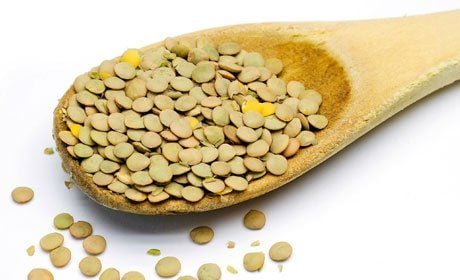
Hàm lượng chất xơ trong đậu lăng là 7,3g/100g
Fiber content: 12.2 grams per plate of cooked beans or 6.8 per 100 grams.
2.14. Split Peas (8.3 grams / 100 grams) Split peas are made from dried peas that have been shelled. They often appear in split pea soup during the holidays with ham.
Fiber content: 16.3 grams per plate of cooked peas or 8.3 per 100 grams.
2.15. Chickpeas (7 grams / 100 grams) Chickpeas are another legume that is packed with nutrients, including minerals and protein.
Fiber content: 12.5 grams per plate of cooked chickpeas or 7.6 per 100 grams.
Other High-Fiber Legumes:
Most legumes are high in protein, fiber and various nutrients. When prepared properly, they are among the cheapest sources of quality nutrients in the world. Other high-fiber beans include:
Cooked black beans: 8.7 grams. Cooked Edamame: 5.2 grams. Cooked lima beans: 7 grams. Baked beans: 5.5 grams. 2.16. Quinoa (2.8 grams / 100 grams) Quinoa is a grain that has become extremely popular among health-conscious people in recent years. It's packed with nutrients, including protein, magnesium, iron, zinc, potassium and antioxidants...
Fiber content: 5.2 grams per plate of cooked quinoa or 2.8 per serving 100 grams.
2.17. Oats (10.1 grams / 100 grams) Oats are one of the healthiest grains on the planet. They are rich in vitamins, minerals and antioxidants. They contain large amounts of a powerful soluble fiber called beta glucan, which stabilizes blood sugar and also lowers cholesterol levels.
Fiber content: 16.5 grams a bowl of raw oats or 10.1 grams per 100 grams
2.18. Popcorn (14.4 grams / 100 grams) If your goal is to increase your fiber intake, popcorn may be the best snack you can eat. Popcorn is rich in fiber and calories. However, if you add more fat, the ratio of fiber to calories will decrease significantly.
Fiber content: 1.15 grams per cup of popcorn or 14.4 grams per 100 grams.
2.19. Almonds (13.3 grams / 100 grams) Almonds are a popular tree nut. They're packed with nutrients, including healthy fats, vitamin E, manganese, and magnesium. Almonds can also be made into almond flour for baking which adds a lot of beneficial nutrients.
Fiber content: 4 grams per 3 tablespoons or 13.3 grams per 100 grams.
2.20. Chia seeds (34.4 grams / 100 grams) Chia seeds are small black seeds that are very common in nature. They are very nutritious, high in magnesium, phosphorus and calcium. Chia seeds may also be the best source of fiber on the planet.
Fiber content: 9.75 grams per 28 grams of dried chia seeds, or 34.4 grams per 100 grams.
Other high-fiber nuts:
Most nuts contain a significant amount of fiber. Example:
Fresh coconut: 9 grams. Pistachios: 10 grams. Walnuts: 6.7 grams. Sunflower seeds: 11.1 grams. Pumpkin seeds: 6.5 grams. All values are per 100 grams.
2.21. Sweet potato (2.5 grams / 100 grams) Sweet potatoes are a popular vegetable in the world and have a delicious sweet taste. It is rich in beta carotene, B vitamins and various minerals. Sweet potatoes can be a bread substitute or a base for making other dishes.
Fiber content: One medium boiled sweet potato (with skin removed) has 3.8 grams of fiber or 2.5 grams per 100 grams.
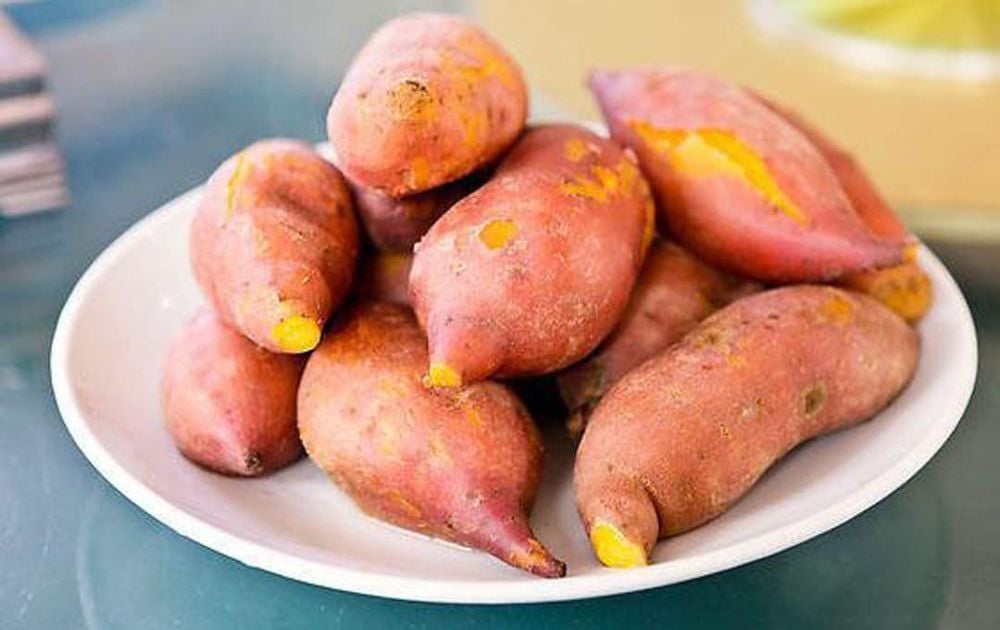
Khoai là loại thực phẩm giàu chất xơ, dễ tìm và dễ chế biến
Fiber content: 3.1 grams in a 28-gram piece contains 70-85% cocoa or 10.9 grams per 100 grams.
Fiber is an important nutrient for the digestive tract, which can promote weight loss, lower blood sugar and combat constipation. Most of us don't meet the recommended daily intake of 25 grams for women and 38 grams for men. Therefore, it is very important to pay attention to adding fiber daily. There are many foods that are rich in fiber, and many of them are affordable and easy to prepare and add to your daily diet.
Please follow the website: Vinmec.com regularly to update many other useful information.
Please dial HOTLINE for more information or register for an appointment HERE. Download MyVinmec app to make appointments faster and to manage your bookings easily.
Reference articles: healthline.com, metamucil.com



